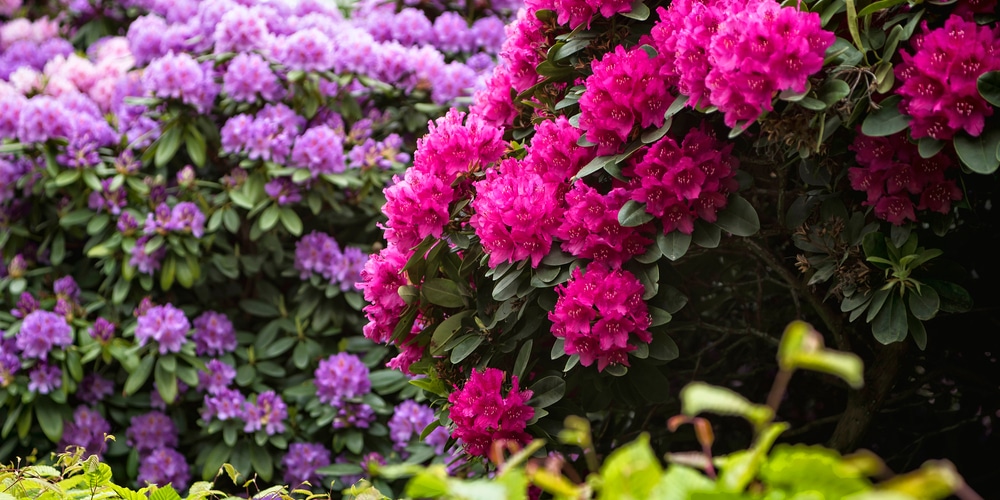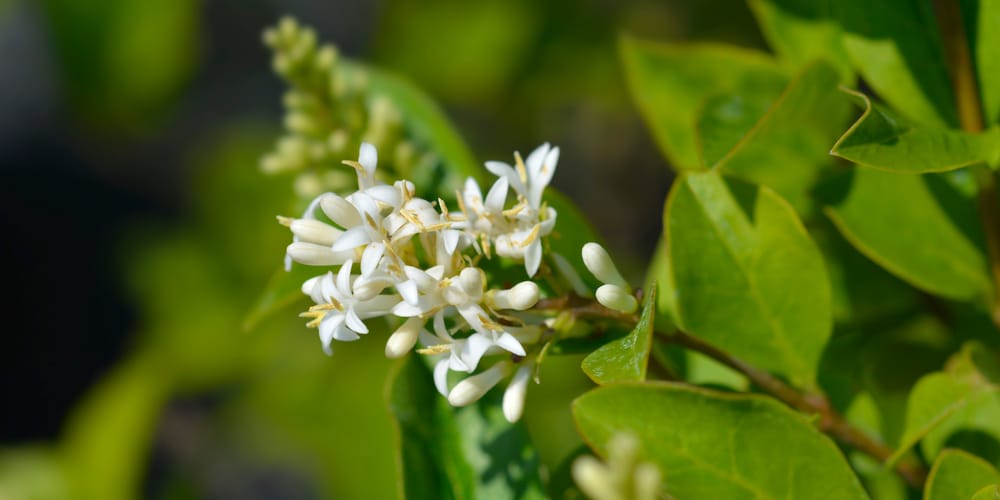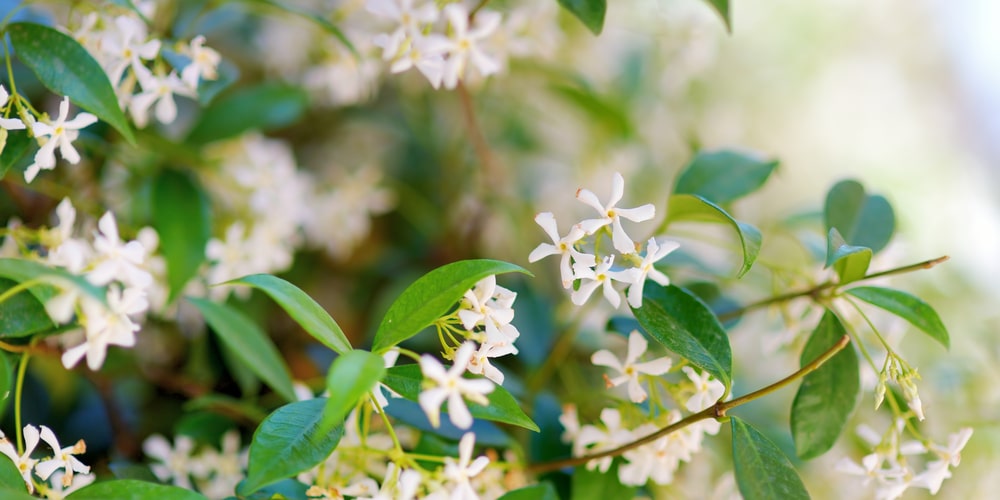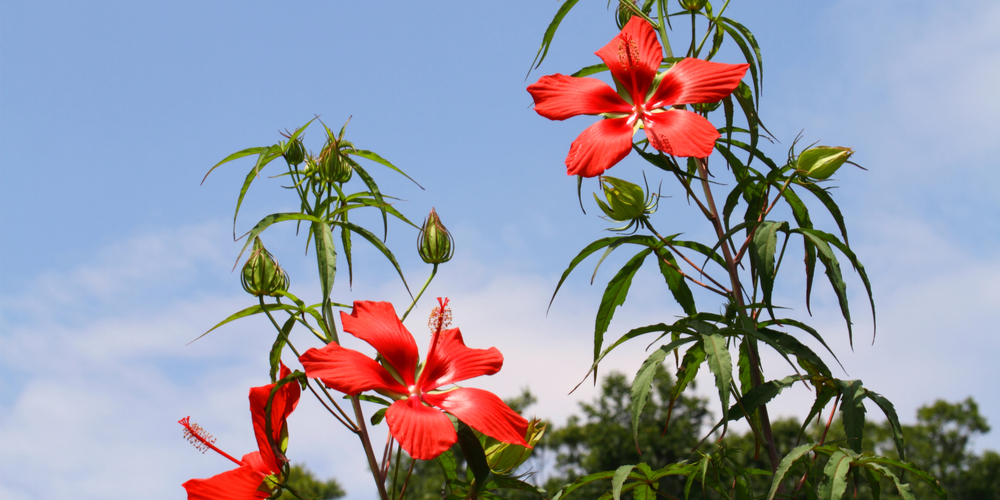Loropetalum is a native Asian flowering plant that deserves a spot in any garden. Its flowers grow in horizontal clusters and come in different varieties and forms. From white to bright pink blooms, you can select the species that accommodates your needs and preferences the best. Loropetalum allows you to play with colors by selecting companion plants that contrast with theirs.
This versatile plant requires minimal maintenance in hardiness zones between 7 and 10. It can be a stunning ornamental in your garden but also a hedge plant to increase your property’s privacy. With its characteristic foliage and flowering, you can rest assured your loropetalum will help you make a statement with your garden.
Don’t forget this plant prefers partial shade and thrives under afternoon light sun. Also, remember to provide it with rich and well-drained soils. If you live in hot regions, you may have to do some mulching to increase nutrient content and water retention in the ground.
Loropetalum Companion Plants
While finding loropetalum companion plants is not hard, you may want some help to find the right combinations for your garden. Don’t worry! In this essential guide, you’ll find everything you need to combine loropetalums with the best plants to enhance their looks and help them grow healthy.
Camellias
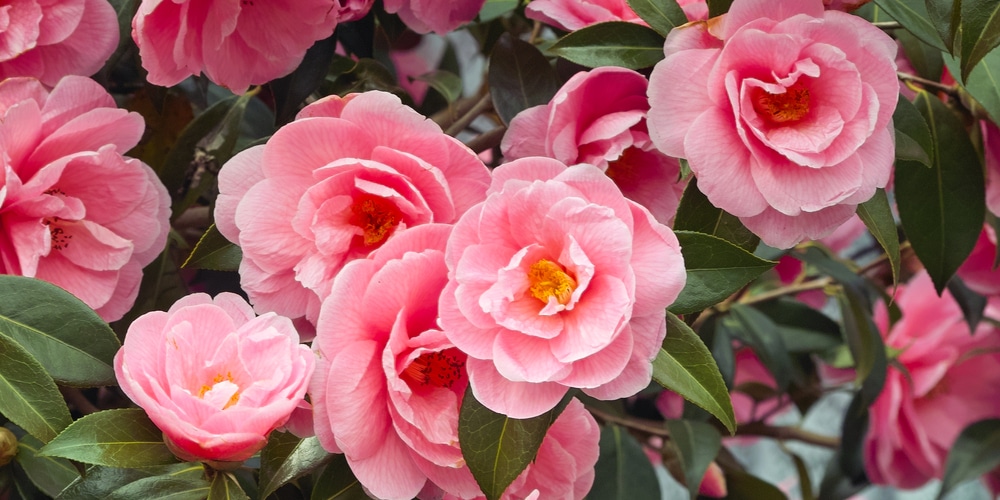
Both loropetalum and camellias enjoy the same soil characteristics. Plant them in acidic and well-draining soils, and you won’t have to worry too much about their growth. Also, the additional benefit of planting camellias and loropetalum together is that you’ll enjoy longer blooming seasons. Indeed, camellia flowers take over once loropetalum finishes flowering in the early summer months. Also, camellia can shelter loropetalum from harsh direct sunlight during the day, which will benefit your shrub.
Rhododendrons
If you are trying to find loropetalum companion plants that will help you create an attractive hedge for your garden, you should consider planting rhododendrons. These flowering bushes thrive in similar conditions as loropetalums and produce flowers that will contrast and combine with those of your Asian plant.
Ligustrum
Ligustrum, also known as “privet,” can withstand various soil and sun conditions, including loropetalums acidic requirements. Together, they work as beautiful hedge plants. Plus, ligustrum is relatively easy to grow, making it an obvious choice for beginners trying to spice up their home landscapes. Don’t forget that the “common privet” is invasive. To prevent your ligustrum from taking over your garden, choose other varieties instead.
Jasmine
For a striking contrast in color and texture, consider planting Jasmin as loropetalum’s companion. You may know this white flowering shrub for its appealing scent and herbal properties. Jasmine also works as an ideal companion to loropetalum thanks to its ability to attract plenty of pollinators, including bees and butterflies. Jasmin has characteristic white flowers, but you can also find yellow or cream varieties, which can pair beautifully with loropetalum.
Hibiscus
If you’d like to create a dramatic effect in your garden, you should consider pairing hibiscus with your loropetalum. You can plant the two next to each other to allow the color differences to enhance one another’s beauty. Plus, both plants thrive under similar conditions, which can come in handy if you’d like to limit maintenance to a minimum.
Ferns
If you need a background to your flower bed, consider planting ferns and loropetalum next to one another. Both like moist and shady environments and thrive under similar conditions. Plus, fern’s bright green foliage can enhance loropetalum’s beauty during its flowering period. In exchange, loropetalum can attract beneficial pollinators to ensure your fern will thrive.
Loropetalum Companion Plants: The Bottom Line
Loropetalum isn’t as common as a house plant as it should be. Indeed, many gardeners overlook this stunning shrub for no apparent reason. Give loropetalum a chance, and you won’t regret it! Use it as a hedge plant to improve your house’s appearance to ensure some privacy and pair it with other shrubs such as rhododendrons.
Alternatively, you can plant it in a container with a late-blooming flowering plant (like camellia) to enjoy longer flowering seasons in your garden. As long as you ensure you can provide your companion plants with what they need, you can try the combination you like the most. Remember to choose a plant that likes partial shade and acidic soil for it to thrive next to your loropetalum!
